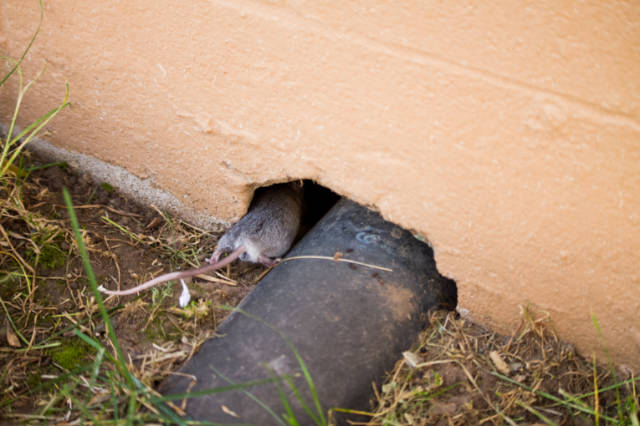Homes and buildings often have soffits, which are the undersides of the roof slope. Soffits have both practical and aesthetic uses, but they can also be a way for mice and other pests to get in. Mice are very adaptable animals that can get into your home through small holes, such as those in soffits. In this article, we’ll talk about whether mice can get in through soffit gaps, what kind of problems that could cause, and whether caulking is a good way to keep mice out of your living areas.
Mice and Gaps in the Soffit
Mice are always looking for a place to stay, food to eat, and water to drink. Soffit holes are a great way for mice to get into your home because they are hidden and easy to get through. Mice can squeeze through holes as small as a dime to get into your attic, walls, and other places inside your home. Once inside, they can do a lot of damage to your property and put your health at risk because of their droppings and the diseases they might spread.
What could go wrong if mice get in?
If you let mice in through gaps in your soffits, it can cause a number of problems:
Mice are known to chew, and if they get into your home, they can chew on electrical lines, insulation, and other building materials, which can damage the structure and make fires more likely.
Mice leave behind droppings, pee, and hair, which can contaminate your home and food and possibly cause health problems.
Disease Transmission: Mice can spread diseases like hantavirus, leptospirosis, and salmonellosis to people through their droppings or urine.
Reproduction and invasion: Mice can have babies quickly, and if you don’t take care of a small population right away, it can quickly grow into a full-blown invasion.
Caulking as a way to stop leaks
Caulking is a popular and effective way to seal cracks and holes in your home, like the ones in your soffits, so that mice can’t get in. When done right, caulking can make a seal that doesn’t let air in or out. This blocks possible entry spots and keeps mice out of your home. Here are some steps for using caulking as an effective protective measure:
Check Your Soffits: Check your soffits often for gaps, cracks, or other spaces that mice could use to get in. Pay extra attention to corners, joints, and places where different elements meet.
Choose the Right Caulk: Choose a high-quality caulking product that works with the material of your soffit, such as an outdoor silicone caulk. Make sure it can withstand the weather and seals well.
Get the Surface Ready: Clean the area around the hole well to get rid of any dirt, dust, or old glue. Before you put the new glue on, make sure the surface is dry.
Apply the caulk: Put the caulk tube into a caulking gun and slowly squeeze the caulk into the gap, making sure it fills the whole space. Use a caulking tool or your finger to smooth out the glue for a neat finish.
Regular Maintenance: Check the caulking every now and then and reapply it as needed to keep mice and other bugs out.
Mice can get into your home through holes in the roof, so caulking is an important way to keep them out. By checking your soffits for gaps and sealing them with high-quality caulking products, you can make it much less likely that mice will get into your living areas. Remember that preventing pests is an ongoing process, and being proactive about sealing possible entry points can help you and your family live in a rodent-free and healthy home.



